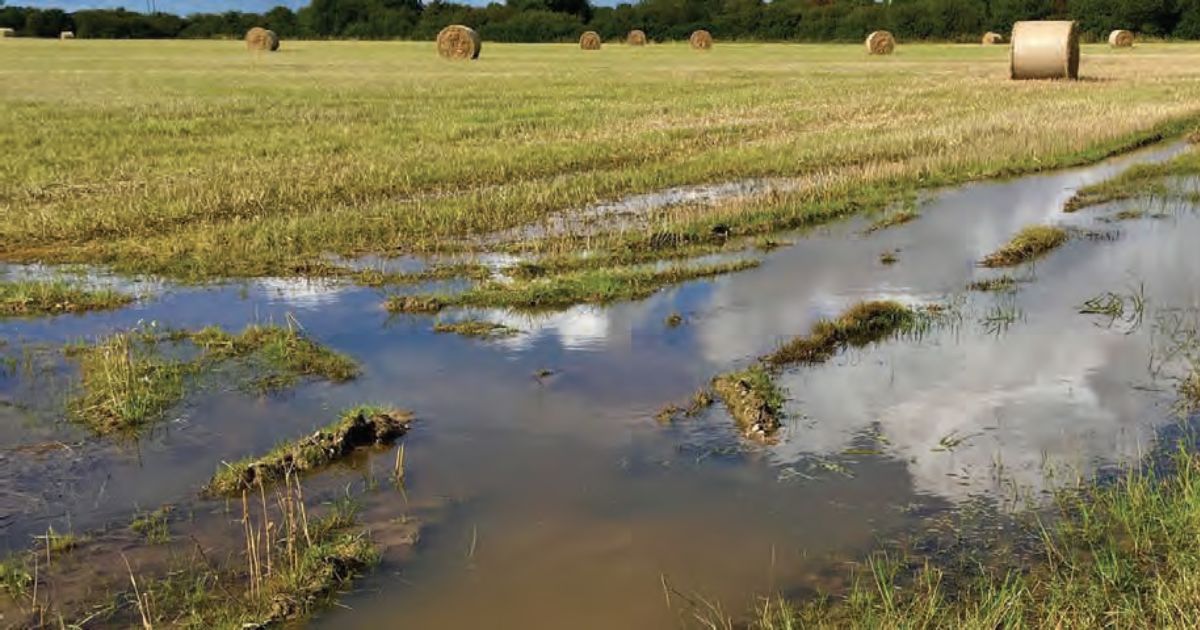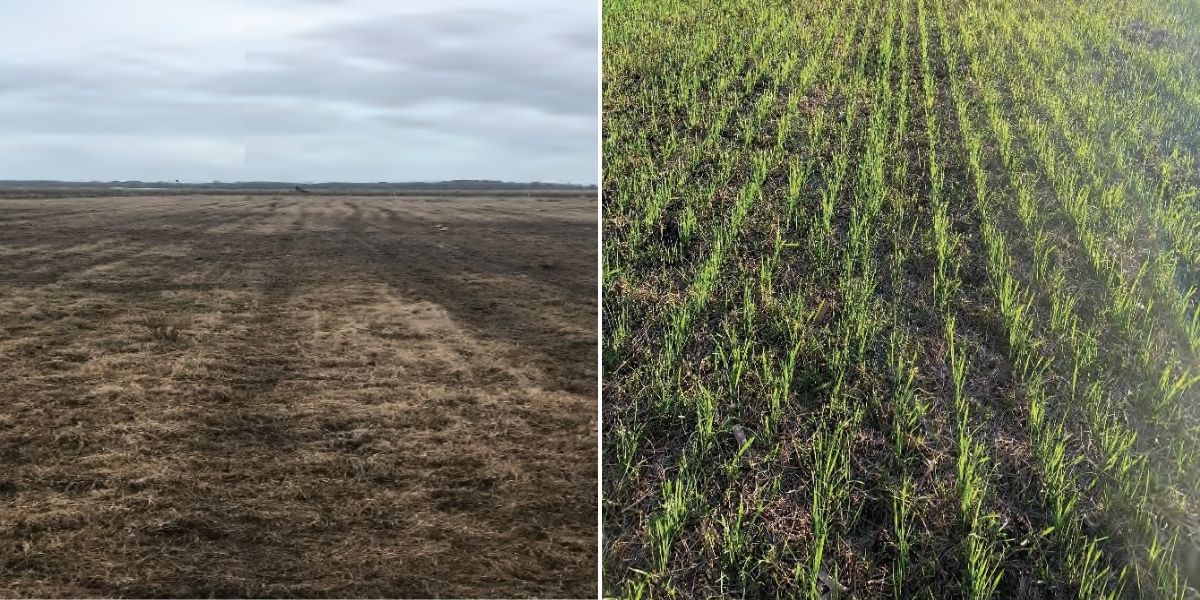Pasture recovery after flood
Flood damage to pastures
Damage to pastures can range from minor sediment deposition, through to deep sedimentation of silt, sand or gravel deposits on pastures, erosion of topsoil, scalding and total loss of existing pasture. From a pasture point of view, the faster water moved over the farm (provided it has not eroded soil, or deposited excessive silt or gravel across paddocks) the better the pasture recovery potential. It can take 2 to 3 weeks after a flood to be able to accurately assess how many of the desired plant species have survived or are geminating from the soil seed bank. For some, this simply involves making a visual assessment, but it may require a count of desired plants still alive per square metre for others. If there are 5 or more plants alive or germinating per square meter, with good care, these paddocks are likely to recover without being replanted provided they are not over stocked through winter.
- Pasture species vary in their ability to survive a flood. Many pasture species that are common in flood-prone areas can withstand inundation for several days.
- Pasture survival after being submerged (or even waterlogged) is linked to how deep the water was and how long they were submerged for. Pasture submerged for more than 4 days is likely to die off and reestablishment will occur through the seed bank in the soil.
- Pastures reestablishing from seed will not have a lot of bulk, or ability to be heavily stocked.
- Hot temperatures whilst inundated or waterlogged increases the risk and rate of pasture death.
- Heavy silt deposits over plants will reduce the rate of recovery.
- Pastures that were in good condition before flooding will likely recover well.
- Wait at least 2 to 3 weeks to see how pastures recover before jumping in to re-sow.
- Rest pastures showing good signs of recovery to allow new shoots to grow, replenish plant root reserves, and seedlings to establish.
- Over sowing with winter forage options is a good way to address potential feed shortages but does put more pressure on any surviving and recovering tropical grasses within that paddock. However it will reduce grazing pressure on other recovering tropical grass areas.
- If large areas of pasture have been killed, concentrate stock by sacrifice areas for hand feeding. This will ensure animal requirements are met and pastures that are recovering get a chance to grow without repeated leaf removal, or damage by cattle trying to graze.

Pasture recovery after flood
Pastures that were in good condition prior to flooding and that were not completely submerged are likely to recover quickly. The adult plant will provide most of the bulk, so long as they have not collapsed down under the water level and are not covered in too much silt. A healthy pasture paddock is also likely to have a high soil seed bank, which once germinated, will assist in filling in any gaps. Pastures that were completely inundated in deep water for more than 3 days, and/or experience high temperatures whilst still waterlogged, will be more reliant on the soil seed bank for recovery. Taller grasses are likely to have fallen over under the water, and if heavily silt covered, they will form a ‘mat’ at ground level. It is unlikely that many adult plants will survive this, those that do will be very weak for several weeks. This ‘mat’ of decaying vegetation can often smother any germinating seedlings.
Post-flood pasture management options
Pasture and stock management to speed recovery will vary depending on the degree of flood damage, the percentage of the property affected and individual property circumstances.
The main options for encouraging pasture recovery are:
1. Resting paddocks
For pastures to recover they need to regrow leaves, and in some cases allow seedlings to establish. Often the first step is to reduce grazing pressure/remove stock. Stock will chase green material and constantly take new shoots, in preference to silt covered older vegetation. Cattle can cause significant damage bogging up the ground due to their weight.
A few things to consider
- Moving stock to another property or agistment. There are large areas of agistment available, speak with your agent, or explore websites such as http://agistment.net.au/, consider all the usual aspects of agistment in making this decision, distance, cost, yards, water, health issues etc.
- Set up a sacrifice area/paddock and hand feed to allow the majority of the flood affected pasture to recover. It can become very costly to feed a breeding unit through winter. Consider your finances and determine how long to carry stock and/or when to sell.
2. Silt Removal
Silt covered pastures often need additional rain fall to wash the silt off. This is because silt forms a physical barrier that prevents plants from photosynthesising to produce energy for growth. 15 to 20mm rainfall is often sufficient. In paddocks where tall pastures have collapsed, under water and silt, a light topping with a slasher or mulcher can be of benefit (to remove the bulk of the silt covered layer). Take care not to cut too low, near the growing points, as this will add more stress to already weak pastures. The more disturbed or bare ground exposed, the greater the chance of weed invasion.
3. Control weeds
Weeds are common after floods, due to reduced competition from the pasture. Some weeds can severely compete with recovering pasture plants, and establishing seedlings, others can be toxic to livestock. If you don’t know what something is seek advice. Control will depend on the weed species causing problems, it may be as simple as a crash grazing or topping, or it may require a herbicide treatment.
4. Replanting tropical grasses
Tropical pasture species planted at this time of year should be considered more of a renovation option and not likely to provide any significant winter feed for this year. Treat these as an option for paddocks you feel have a low population of desirable species, and you were considering renovating anyway, with no real need for feed until next summer.

Left image shows a dead setaria, paspalum and couch pasture following the 2017 Lismore floods. The paddock was drilled with a mixture of oats and ryegrass 3 weeks post flood with disk drill to cut through the trash and place seed into soil. Right image shows the recovered paddock 5 weeks after flood.
Sowing options after flood
Try to minimise soil disturbance as much as possible to reduce weed burden, broadcast or direct drill is ideal.
Soft, wet ground will present challenges for some in using traditional seeding equipment so consider broadcasting seed with suitable machinery, especially if there is still soft mud/ silt present and no crust has formed on the surface. Seed to soil contact is still important. Broadcasting seed into a collapsed tussocky species, such as dead setaria, is not likely to be successful as seed will be held up in the tussocks or dead mat material (and will not be touching the soil). Consider mulching prior to seed distribution.
Waterlogged soils affect the availability of nitrogen, sulphur and phosphorus. Very wet soils can be planted with seed only, and then fertiliser applied once the soil dries out further and young seedlings have emerged. Ideally within 2 – 4 weeks after emergence.
Download our pasture recovery after a coastal flood or pasture recovering after a flood factsheets for more information.